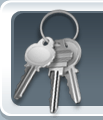Though you;d by no means know it from reading most of the current iSlate posts and stories,
Office Home And Business, Microsoft in fact had a pioneering role in the tablet space. 1 post I saw these days thanks to a Tweet from my ZDNet blogging colleague Ed Bott) by GottaBeMobile Founder Rob Bushway focuses around the Softies; impact in tablets. Bushway;s conclusion was if the Redmondians don;t alter their approaches, 2010 might be the year that Microsoft lost the tablet market.
I;d argue Microsoft already lost the first-generation tablet marketplace — because of primarily to lack of marketing, as much as anything else. And I;m not saying that simply simply because I, myself,
Office 2007 Pro Plus, am not a tablet fan. I;m also not a fan of touch on a PC or anything with a screen bigger than a phone for the reason that there;s no reason, other than possibly in a kiosk-type setting, that using touch on a PC brings any real benefits to the party.
But Microsoft officials, especially Chairman Bill Gates,
Office 2007 Professional Plus Key, have big believers in tablets and touch. They;ve been consumed with finding a way to get these two technologies off the ground and have been willing to keep pouring money and time into research and development to do so. But once they had some promising prototypes and partners in place, they dropped the ball.
Even although many pooh-poohed Microsoft;s Origami/UMPC (ultra-mobile PC) handhelds, in hindsight they don;t look as ridiculous as many originally thought, at least in my opinion. Microsoft truly had some ambitious and interesting plans for Windows-based UMPCs. Here are some of the guidelines Microsoft offered in 2007 to hardware makers interested in building Windows Vista-based UMPCs:
* Five- or seven-inch displays
* Lower-power LED-backlighting
* Screen resolutions of 1024 X 600 (not the 800 x 480 minimum common along with the first-wave UMPCs)
* WiMax and integrated WWAN connectivity (supplementingthe existing 802.11 b/g wireless and Bluetooth connected devices)
* New input options, including thumb/QWERTY keyboards, along with all the more-standard touch, stylus and thumb-based controls on current UMPC models
Microsoft officials were predicting “second-wave” UMPCs would have 1 GB-plus of RAM, WDDM/DX9+ graphics support; three to four hours of 3-cell battery life; a weight of under one.5 pounds; and 18 to 20 mm thick form factors. Back in 2007, the Softies also were hoping to see UMPCs with $500 price tags.
What a difference a couple of years makes. UMPCs vaporized. Netbooks/ultra thins/e-readers took their place… sort of. And the bottom fell out of the PC market, price-wise, making $500 for UMPC-type device look pricey.
Maybe Microsoft;s big mistake was putting too many eggs inside the Windows basket with mobile devices. Why not also offer five-inch devices running Windows Mobile (or some other Windows Compact Edition derivative)?
Again, many seem to have forgotten, but Microsoft has been exploring that possibility. Len Kawell, a Microsoft Distinguished Engineer (and former colleague of Microsoft Chief Software Architect Ray Ozzie) has been searching into the possibilities about Windows-Mobile-based Mobile Internet Devices (MIDs). There;s been no word inside the past 12 months as to what;s come of Kawell;s investigations, but there have been public demos of Windows Mobile-based MIDs based on ARM. And with Web apps gaining in prominence, the lack of Windows Mobile apps for non-Intel/AMD processors may not be the deal breaker that it once was….
There;s one other Microsoft project inside the works that may have a bearing on Microsoft;s next-generation tablet designs. That;s the “Oahu” Surface knock-off — a “small-ass table” that would be a more affordable, consumer-focused version of Microsoft;s multi-touch table. I;ve heard that Oahu is actually the precursor to the rumored Microsoft Courier tablet (and may be being designed, in part, in Hawaii), but can;t verify this.
Speaking of Courier, that spiffy next-gen touch tablet still seems quite a techniques off, if it ever does move beyond the marketing video stage. But what if there;s a Windows- or Windows Mobile 7-based MID/tablet inside the wings,
Office 2007 Pro Plus Key, being built by one of Microsoft;s hardware partners, that can run a more practical, easier-to-learn version of 1 Note, plus access Web apps, Zune subscription-based music, and (for those who game),
Office Standard 2007, Xbox Live? If such a device didn;t force me to go 100 percent touch, I;d be sold!
If Microsoft doesn;t end up fielding something that looks and works exactly like Courier, what features would its next-gen tablet have to include for you to consider it a viable alternative to other tablets/MIDs/netbooks out there?


